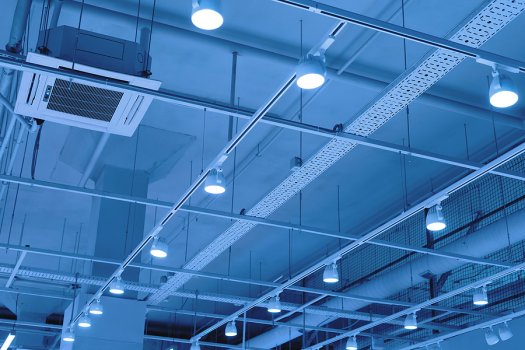K
Kathleen Martin
Guest
I’m always on the lookout for technologies that helps reduce the use of batteries for the IoT. With that in mind, I’m bullish on energy-harvesting sensors and radios, and excited to see more investment in wireless power at a distance. So this week, I dug into a paper from researchers at Universidad Carlos III de Madrid, Uppsala University in Sweden, and Spain’s IMDEA research nonprofit that discusses a way to use light and radio frequency backscatter to eliminate batteries in the IoT.
The paper outlines a concept the researchers call Passive LiFi, which uses light and radio frequency (RF) backscatter as energy sources and light as a means to most efficiently transmit data. It builds on LiFi, a technology that uses light to transmit and receive information. LiFi, which is short for “light fidelity,” has been around for a while, with big companies such as Disney and Signify investing in it, but it hasn’t yet hit the mainstream.

LiFi was introduced about a decade ago as a means of using light to transmit data. Currently, most of our wireless data transmissions, such as Wi-Fi and cellular, occur through the use of radio frequencies. But with LEDs, engineers can modulate the frequency of light in ways that transmit information. And of course you can also transmit data by flicking a light on and off.
LiFi is still fairly niche technology, in part because it requires a line of sight between the light and the device receiving the data. That means if you want to transmit information to, say, a phone, it needs to be out of someone’s pocket or purse and underneath the light source. And LiFi isn’t inherently energy efficient, largely because light sources generating the signal tend to be plugged into their own source of power.
But with PassiveLiFi, researchers are more interested in using LiFi to communicate small amounts of data over long ranges while simultaneously harvesting energy from the light source. In their paper, the PassiveLiFi researchers showed off a system with a light source and an IoT tag that was able to communicate at a distance of 305 meters (1,000 feet) with the tag consuming just 3.8 microwatts.
Researchers tweaked the traditional LiFi system in a few different ways. But the two most important things to know about Passive LiFi as compared to other wireless transmission schemes is that, one, it uses light to transmit data instead of RF; and two, that it uses both light and RF to generate energy.
Continue reading: https://staceyoniot.com/can-passivelifi-make-batteries-for-iot-obsolete/
The paper outlines a concept the researchers call Passive LiFi, which uses light and radio frequency (RF) backscatter as energy sources and light as a means to most efficiently transmit data. It builds on LiFi, a technology that uses light to transmit and receive information. LiFi, which is short for “light fidelity,” has been around for a while, with big companies such as Disney and Signify investing in it, but it hasn’t yet hit the mainstream.

LiFi was introduced about a decade ago as a means of using light to transmit data. Currently, most of our wireless data transmissions, such as Wi-Fi and cellular, occur through the use of radio frequencies. But with LEDs, engineers can modulate the frequency of light in ways that transmit information. And of course you can also transmit data by flicking a light on and off.
LiFi is still fairly niche technology, in part because it requires a line of sight between the light and the device receiving the data. That means if you want to transmit information to, say, a phone, it needs to be out of someone’s pocket or purse and underneath the light source. And LiFi isn’t inherently energy efficient, largely because light sources generating the signal tend to be plugged into their own source of power.
But with PassiveLiFi, researchers are more interested in using LiFi to communicate small amounts of data over long ranges while simultaneously harvesting energy from the light source. In their paper, the PassiveLiFi researchers showed off a system with a light source and an IoT tag that was able to communicate at a distance of 305 meters (1,000 feet) with the tag consuming just 3.8 microwatts.
Researchers tweaked the traditional LiFi system in a few different ways. But the two most important things to know about Passive LiFi as compared to other wireless transmission schemes is that, one, it uses light to transmit data instead of RF; and two, that it uses both light and RF to generate energy.
Continue reading: https://staceyoniot.com/can-passivelifi-make-batteries-for-iot-obsolete/

